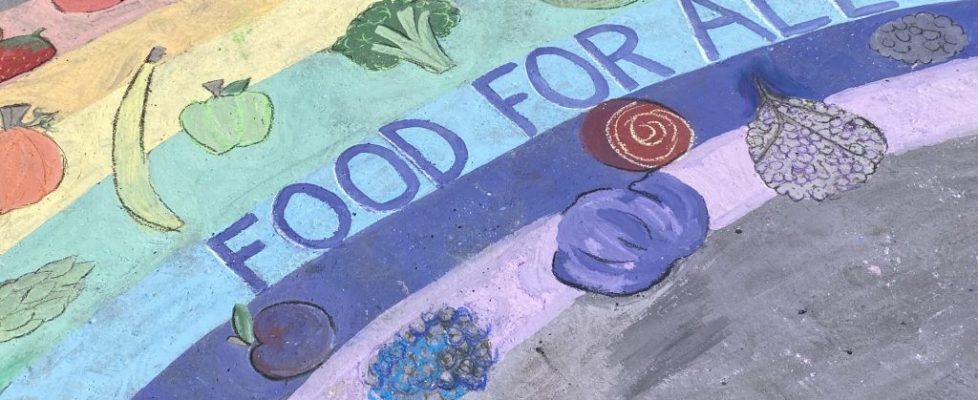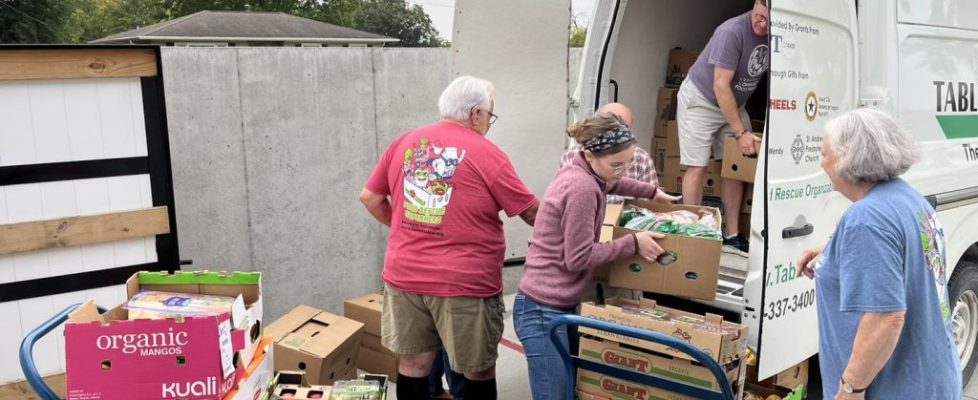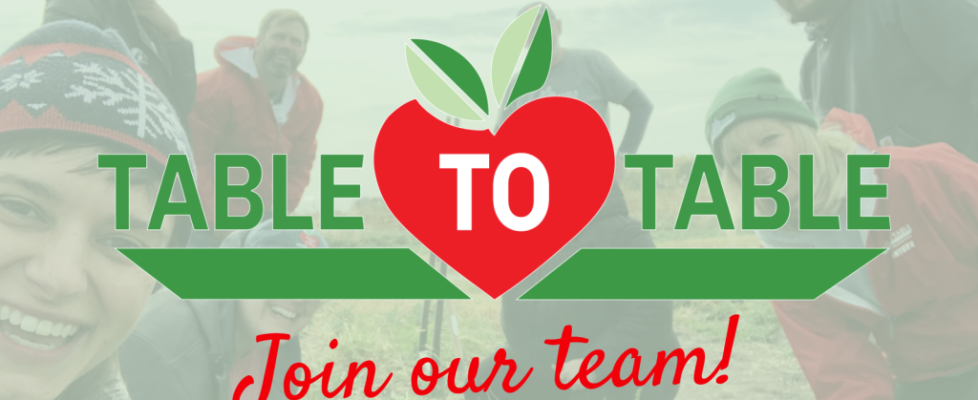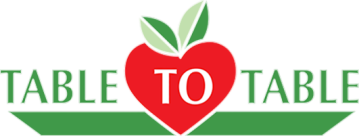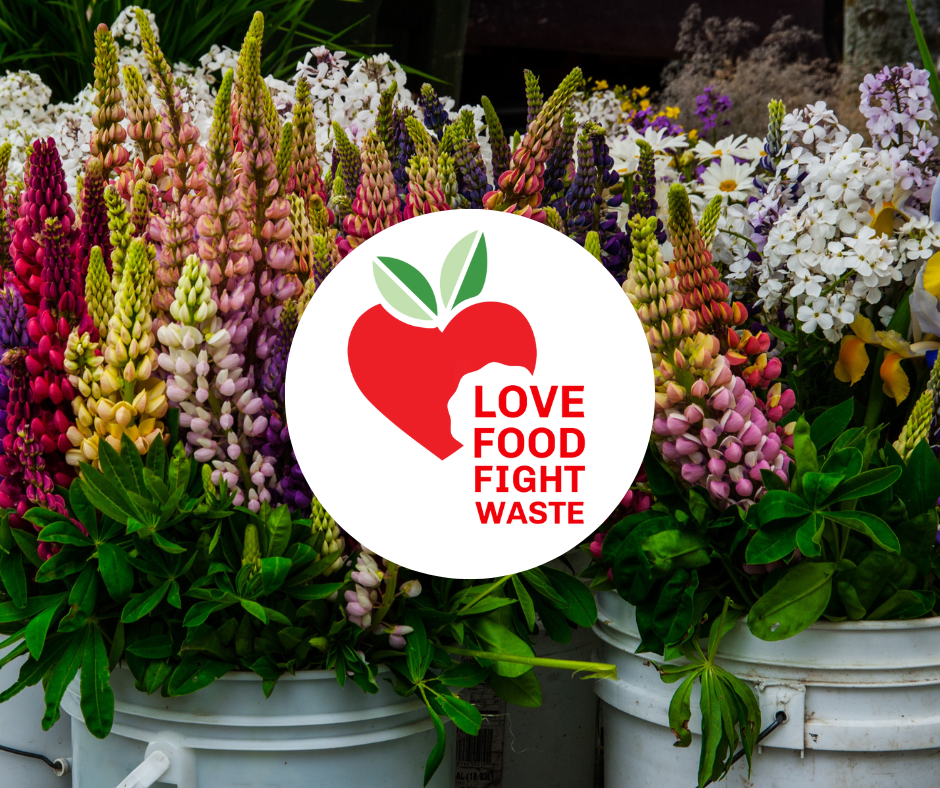
Why Local Foods Matter
Did that apple you’re eating come from five miles down the road, or is it more well-traveled than you are? Reduce your carbon footprint and benefit your health by choosing local food.
Monthly Topic Overview
Why does choosing local food matter?
“Choosing local food whenever in season and when possible, as often as possible, strengthens a community-based food system,” says Michelle Kenyon, director of Field to Family, an Iowa City-based nonprofit that works to create a healthy and sustainable local food system. “Community food systems enhance the health of our economy, environment, and our population.”
Let’s go in-depth with benefits:
- Choosing local food reduces transportation-associated greenhouse gas emissions.
- Significant greenhouse gas emissions are associated with food logistics. Most conventional food travels over 1,000 miles to get to us, the consumers. (To put that into perspective, that’s like driving to Boston from Iowa City.) Almost one-fifth of carbon emissions in the food system are from burning fossil fuels to transport (and refrigerate) food via trucks, trains, boats, planes, etc. With a greater distance to travel, there’s also a higher chance of food spoiling or being damaged on its journey, leading to more food waste.
- Choosing local food offers fresher, more nutritious options that benefit your health.
- Food sourced locally spends much less time in transit from the farm to your plate, which means it loses fewer nutrients before you eat it. Plus, it’s fresher and tastes better. Eating local encourages you to eat with the seasons, learning when certain types of produce are at their peak for quality and taste.
- Plus, many local farmers take environmental health into consideration when growing food, using sustainable practices to increase biodiversity and protect pollinators.
- “‘Know your farmer, know your food’ is absolutely true, as local farmers are transparent when it comes to their growing philosophies,” Kenyon says. “Those who implement growing practices that are committed to improving soil, water, and air health are upfront about it.”
- Choosing local food strengthens our food system.
- When you purchase local food, you’re supporting local farming, processing, and distribution jobs, keeping your dollars in our local economy. The more of our local dollars that go into local food, the more local food is grown in our region. Those dollars invest in the future of our food supply.
- In addition to food, agritourism supports our community’s economy. Participating in local activities like farm to table dinners, goat yoga, and apple picking ultimately support folks living and working in our communities.
How can I access local food in Johnson County?
Now that you understand the difference that eating local can make, let’s delve into how you can access local foods in Johnson County. Our community is host to a lot of quality local food options, including these listed:
- Farmers Markets offer seasonal local foods and goods sold by our neighbors. Markets typically run May-October. Check out this list of Johnson County Farmers Markets.
- If you’re looking to order local foods online, Field to Family offers an Online Market from April thru December.
- Many local farms offer community-supported agriculture (CSA) shares for purchase. Vegetable shares are seasonal and subscription-based. Find a local CSA with this guide to Iowa CSA farms.
- Want to grow your own produce? You can’t get more local than that!
- Try your hand at gardening in your backyard; or, if your space is limited, container gardens kept on patios, steps, or in windows are excellent for growing your own tomatoes, peppers, eggplants, lettuces, strawberries, and herbs.
- Iowa City community garden plots are another great option for planting your own garden or gardening with friends.
- Plus: share your bounty and grow an extra row to donate to Table to Table! Drop your donations off at the Table to Table office in Pepperwood Plaza, 1049 US-6 E, Iowa City on weekdays or Saturday mornings.
- Shop local at the grocery store. Wherever you shop, check labels when you’re shopping to see where the food you’re planning to purchase came from.
Activity
- Learn about how you can access local food in our area with Field to Family’s resources.
- Next time you go to the grocery store, pick out three produce items and check the labels. Where are the items from? Are they local or from a faraway place?
Resources
- Field to Family resources:
- List of Johnson County Farmers Markets
- Guide to Iowa CSA Farms
- Container Gardening Tips
- Iowa City Community Garden Plots
- Iowa State University’s Vegetable Planting and Harvesting Times
More on local food benefits from Iowa State University
Now Hiring: Part-time Donor Relations Manager or Coordinator
Position & Ideal Candidate Overview:
Table to Table is posting this part-time position at two levels in the hopes of filling a single position with a person who is a good fit for the role while also aligning the candidate’s experience with the position responsibilities and title. The level of responsibility in leading, developing, and meeting fundraising metrics independently is different depending on the experience level. Pay and hours would also be adjusted accordingly.
The Donor Relations and grant support position supports the financial health of the organization. A dynamic, creative, and organized fundraising leader, you will help a mission-driven nonprofit thrive and grow. This position will play a critical role in the fundraising and donor stewardship for Table to Table. We are looking for an outstanding communicator and a community-minded individual who is passionate and enthusiastic about conveying our mission to inspire financial support from organizations and individuals. The ideal candidate is organized, self-motivated, and has a great attitude to contribute to the positive strengths-based culture at T2T. The right candidate is patient and persistent with a successful track record in sales or marketing. As this is a public-facing role, we’re looking for a “people person” who is tactful and enjoys interacting with those of diverse ages, abilities, and backgrounds. If you have these qualifications and want to put your time and energy toward feeding thousands of people in our community, this is the job for you!
The candidate at the Donor Relations Manager level will be responsible for managing and cultivating relationships with current and prospective donors in the areas of major gifts and corporate sponsorships with the goal of increasing fundraising revenue and donor engagement and retention. Tactics include implementing an expanded program for donor engagement, cultivation, recognition, and stewardship through supporting increased personalized communication with past, current and prospective donors, from both household and business sectors through personal visits and communications. Their role in grant researching and writing coincides with corporate donor development and will play a crucial role in identifying new funding opportunities and crafting compelling grant proposals to secure financial support for our organization’s programs and initiatives. This position requires a proactive individual with excellent research, writing, and organizational skills who can effectively communicate our mission and goals to potential funders.
A candidate at the Donor Relations Coordinator level supports the development and fundraising efforts at Table to Table through donor engagement, relationship-building, and grant coordination activities. A creative and detail-oriented team member, this position helps carry out the organization’s donor stewardship and revenue generation strategies. The Donor Relations Coordinator will assist with outreach to current and prospective donors, focusing on donor engagement, stewardship, and cultivation. This includes personalized communication, meeting preparation, event support, and data entry. The role also includes supporting grant research and assisting with writing and submitting grant applications for corporate funders.
Employment Status and Work Hours: (Part-time position)
One day per week in office during a time that aligns with organization needs and flexible work from home options for other work hours as long as position metrics are being met. This position travels within Eastern Iowa for donor engagement activities.
Pay & Benefits:
Donor Relations Manager: Up to 20 hours per week, $29 – $34 an hour commensurate to experience
Donor Relations Coordinator: Up to 30 hours per week, $23 – $26 an hour commensurate to experience
Benefit package includes sick leave, employer retirement contribution once eligibility requirements have been met.
Position Goals and Metrics:
The Donor Relations Manger will focus on these four primary objectives:
- Increase income from household donors and secure sponsorships/business support.
- Develop and implement a donor relations plan to increase donor retention and identify next steps in moves management
- Complete and submit corporate partner grant applications by deadlines. Track, document, and complete deliverables including reporting as needed.
- Manage ongoing donor cultivation strategies
Revenue goals for the position align with the strategic plan and will be revised annually to align with the capacity and cost of the position.
The Donor Relations Coordinator will focus on the following key objectives:
- Support donor engagement and communication to help increase donor retention and household giving.
- Assist in implementing a donor relations plan that aligns with strategic goals.
- Complete and submit corporate partner grant applications by deadlines. Track, document, and complete deliverables including reporting as needed.
- Contribute to stewardship activities and lead donor recognition efforts.
Revenue goals for the position align with the strategic plan and will be revised annually to align with the capacity and experience level of the position.
Donor Relations Manager Qualifications and Competencies:
- A passion for Table to Table’s mission to bridge the gap between abundance and hunger to increase food equity and reduce environmental harm by collecting and redistributing surplus food through partners to people who can use it..
- Five years of fundraising, sales, marketing or communications experience with knowledge of fundraising principles and best practices preferred.
- Previous experience with nonprofits, fundraising, development and special events is preferred.
- Previous or current membership to a professional fundraising or sales association a plus
- Experience in grant research and proposal writing, preferably in a nonprofit setting.
- Strong communications and interpersonal skills.
- Exceptional project management, organizational and time management skills, with an ability to prioritize and manage multiple projects simultaneously, seeing projects to completion on deadline.
- Must be able to write clear, high-level, accurate and compelling copy for solicitation material, communications with donors, etc.
- Creativity as well as analytical ability to maximize program outcomes and track for strategic and process improvements.
- Excellent public speaking and presentation skills for the purpose of promoting Table to Table’s mission. Ability to connect with others and forge strong relationships.
- High ethical standards, discretion, and confidentiality in working with donor information.
- Familiarity with the Johnson County business and nonprofit community preferred.
- Ability to work well within a diverse team and across departments.
Donor Relations Coordinator Qualifications and Competencies:
- A passion for Table to Table’s mission to bridge the gap between abundance and hunger to increase food equity and reduce environmental harm by collecting and redistributing surplus food through partners to people who can use it.
- Minimum of 1 years of experience in fundraising, sales, marketing & communications, donor relations, or nonprofit administration preferred.
- Some experience in grant research or writing in a nonprofit or related setting is a plus.
- Strong communication and interpersonal skills.
- Organized, detail-oriented, able to manage multiple tasks simultaneously, and prioritize with guidance.
- Ability to write clearly and effectively for donor communications and basic proposals.
- Comfort engaging with donors and community members in person and by phone or email.
- Exceptional project management, organizational and time management skills, with an ability to prioritize and manage multiple projects simultaneously, seeing projects to completion on deadline.
- Excellent public speaking and presentation skills for the purpose of promoting Table to Table’s mission. Ability to connect with others and forge strong relationships.
- High ethical standards, discretion, and confidentiality in working with donor information.
- Familiarity with the Johnson County business and nonprofit community preferred.
- Ability to work well within a diverse team and across departments.
Necessary Skills and Requirements
- Valid driver’s license and good driving record.
- Excellent public speaking, presentation, and writing skills for the purpose of recruiting volunteers, fundraising, and promoting Table to Table’s mission. Ability to connect with others and forge strong relationships.
Review the complete and differentiated job descriptions below:
Donor Relations Manager Job Description 2025
Donor Relations Coordinator Job Description 2025
To apply, email a resume and cover letter to hr@table2table.org

Celebrate Food Waste Prevention Week With Us!!!
This month, we are partnering with Food Waste Prevention Week, happening April 7-13, 2025, to shine light on the importance of food waste reduction and to share some easy tips on how you can reduce food waste.
The party continues through all of April as we celebrate our Love Food, Fight Waste program’s three year anniversary this month! Celebrate with us by taking action to reduce food waste.
Here are some ways to make a difference:
-
- Take our 10 Actions Challenge which offers a range of activities to participate in. Compete with your friend, family member, or neighbor this month and see who can score the most points. Click here for a link to the scorecard.
- Get prepared for this year’s local produce season:
-
- Farmers markets offer seasonal local foods and goods sold by our neighbors. Markets typically run May-October. Check out this list of Johnson County Farmers Markets.
- If you’re looking to order local foods online, Field to Family offers an online farmers market.
- Many local farms offer community-supported agriculture (CSA) shares for purchase. Vegetable shares are seasonal and subscription-based. Find a local CSA with this guide to Iowa CSA farms.
- Want to grow your own produce? You can’t get more local than that!
- Try your hand at gardening in your backyard; or, if your space is limited, container gardens kept on patios, steps, or in windows are excellent for growing your own tomatoes, peppers, eggplants, lettuces, strawberries, and herbs.
- Share your bounty and grow an extra row to donate to Table to Table! Drop your donations off at the Table to Table office in Pepperwood Plaza, 1049 US-6 E, Iowa City on weekdays or Saturday mornings.
- Get involved with your community! Volunteer or donate to the organizations who are reducing hunger through food rescue.
- Educate yourself on local volunteer opportunities or consider donating food and personal care items. Here are just a few wish lists from some of our partner organizations:
You may also bring items to Table to Table to be delivered throughout the local hunger relief network!
Now Enrolling: Summer Iowa Community Corps AmeriCorps Local Foods Position
Join our team! Iowa Community Corps AmeriCorps Position at Table to Table
Position Summary:
The Local Foods Recovery Coordinator will support seasonal programs that include gleaning, garden recovery, and produce distribution. They will lead and assist in harvesting excess produce from farms and gardens, strengthening relationships with local donors, and organizing pop-up free produce stands with partner agencies. They will also help pilot initiatives to recover food from semi trucks, culturally specific grocery stores, and prepared food providers.
T2T serves as the hub for 60% of the food distributed by Johnson County’s hunger relief network. The best candidate is an energetic team player with strong communication skills who enjoys interacting with people of diverse ages and backgrounds.
AmeriCorps Service Term Options:
The service term for this position is June through August – 10 weeks, 33 hours per week.
Work Hours:
At least threedays Monday-Friday from 8am until noon or 3:30pm with some flexibility.
An evening a week 3-7:30pm for Free Produce Stands. Other days and times as needed and agreed upon. May include weekend Free Produce Stands, gleaning & volunteer events, farmer’s markets, or outreach events with partner organizations.
About AmeriCorps and Iowa Community Corps:
AmeriCorps is the federal agency for national service and volunteerism in the United States. It’s an opportunity for adults of all ages and backgrounds to serve their communities and their country through a network of partnerships with local and national nonprofit groups. AmeriCorps members address critical needs such as literacy, health, housing, technology, the environment, economic development, and many other fields. It is a chance to apply your skills and energy toward helping others and strengthening the organizations that make a positive difference in Americans’ lives.
Read more about the Iowa Community Corps program.
Financial Information, Benefits, & Additional Information:
Minimum Time (300 service hours, est. 33 hours/week over 10 weeks):
Living Allowance: $3,945
Education Award: $1,565.08
Supervision Given By: Table to Table Distribution Coordinator
Qualifications & Competencies:
- Enthusiastic advocate for food rescue, hunger relief, and food waste reduction.
- Ability to work in a fast-paced environment, maintaining energy through often repetitive tasks. Ability to switch gears quickly and manage multiple tasks concurrently.
- Ability to work autonomously and perform well under pressure. Detail-oriented & resourceful.
- Functional knowledge and ability to use Microsoft Office and Google Suite.
Licenses & Qualifications:
- Required: Must be able to regularly and repeatedly lift and move 20-40 lbs.
- Preferred but not required: Over 21 with a valid driver’s license for a minimum of 4 years and good driving record (must be insurable under organization liability insurance); willing to drive large vehicles.
- Must be able to use technology including computers, printers, phones, vehicle and refrigeration units, and other equipment. Functional knowledge of computer systems.
Essential Functions:
Local Produce Program Implementation
- Harvest excess produce from farms and gardens
- Collect excess produce from markets and produce auctions
- Recruit and communicate with farmer- and gardener-donors to increase local food donations
- Recruit and schedule volunteers, including communication of location and time for activities
- Lead volunteers in gleaning activities
- Demonstrate best practices for food handling safety
- Motivate and build up the local farmer- and gardener-donor network through recognition events and outreach
- Connect with other gleaners in Iowa and build or rebuild gleaning communications and networks
- Track data and evaluate trends around gleaning efforts
Food Distribution through Free Produce Stands
- Deliver harvested and prepared produce to local partners in the Johnson County hunger relief network including food pantries & overnight shelters
- Facilitate produce pop-up stands (Free Produce Stands) in neighborhoods & community locations to deliver free produce to food insecure individuals
- Lead volunteers in setup and tear down of produce stands
Volunteer & Program Operations Duties
- Recruit and schedule volunteers as needed for gleaning, Free Produce Stands, and food rescue operations
- Utilize communications tools and create materials to increase public awareness of programs, services & opportunities
- Participate in food rescue program by picking up donations from local partners and delivering/unloading donations at distribution sites
- Record volunteer feedback and pass on pertinent information that impacts planning and management of food rescue program
- Unload and organize food received and work with staff to determine the appropriate distribution of food donations
- Track data and evaluate trends: Perform food rescue program data entry & assist with volunteer record keeping through Salesforce
Typical challenges this position will face:
- Frequent interruptions, especially during hours with heaviest volunteer activity
- Last-minute volunteer & logistics scheduling conflicts
- Needing to make sound, quick decisions based upon available information
Work Environment:
- Work is in-person in both an office and warehouse/transportation environment
Interested in learning more?
Submit a resume and cover letter to Nicki Ross at hr@table2table.org
Table to Table’s Mission Statement:
Table to Table bridges the gap between abundance and hunger. Our mission is to increase food equity and reduce environmental harm by collecting and redistributing surplus food through partners to people who can use it.
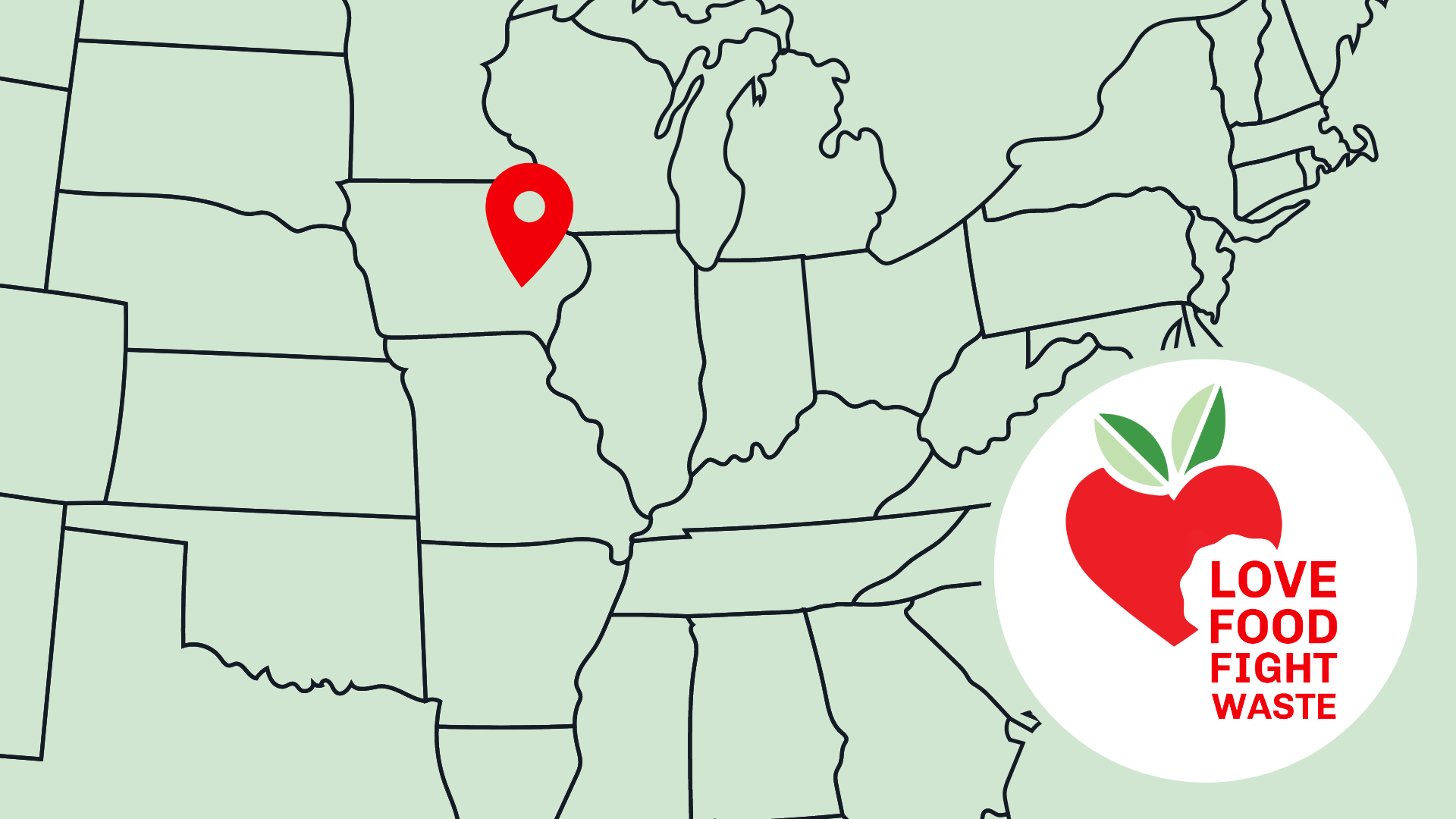
2025 Johnson County Food Waste Profile
According to the 2022 Iowa Statewide Material Characterization Study conducted by the Iowa Department of Natural Resources, approximately 20.4% of what ends up in the Iowa City Landfill is food waste. In 2022, the Iowa City Landfill properly landfilled 130,109.46 tons of garbage from our service area – Johnson County, Kalona, and Riverside. Of that, about 26,542 tons was food waste.
Why do we want to reduce food waste and keep food out of the landfill?
When food is wasted, it wastes all the resources that went into growing, manufacturing, distributing, and transporting that food. At the landfill, once garbage is compacted into place by trained Landfill Operators, there is no air (oxygen) or light in a landfill hole. This is the perfect environment for methane, a very potent greenhouse gas, to be produced in the absence of oxygen and in the presence of so many organic materials (food waste). One of the best things each of us can do to take climate action is to reduce food waste.
A great alternative for food waste disposal is composting. While we encourage good, edible food to be eaten as the first priority, we will always have the inevitable banana peels, eggshells, and coffee grounds that we want to responsibly dispose of. Composting is a great option for those items! For a deep dive into composting, check out this deep dive into composting.
Who is recovering food in Johnson County?
T2T saw up to a 60% increase in the amount of food rescued annually between 2017 and 2022. And that growth has continued! Since 2022, Table to Table has continued to increase the amount of food rescued throughout Johnson County.
Table to Table manages a complex food rescue network throughout Johnson County involving more than 100 food donors and nearly 50 recipient organizations. Food donors include area stores, warehouses, processors, restaurants, farms, markets, and gardeners that donate their unsold or excess food to Table to Table. T2T volunteers deliver this food directly to organizations that are serving our neighbors in need so this food reaches people as quickly as possible. Our partners report that most T2T food makes it to our neighbors’ homes within 6 hours of our daily deliveries. These organizations include food pantries, shelters, hot meal sites, and youth programs that connect rescued food to our neighbors. Ultimately, people rescue food by eating it: using it for its intended purpose!
In 2024, T2T recovered 2.7 million pounds of food, redirecting it throughout our community where it was needed and feeding more than 22,000 people. More than half of this food is produce, protein, and dairy. Recall that some of the most commonly wasted foods are produce, dairy, and bread. T2T is making a huge local impact in these most-wasted categories!
T2T rescued food provides about half the total food that the three largest local pantries distribute. Plus, recovered food helps provide more options, including vegan and gluten free foods and a variety of produce grown locally.
Activities
- Help us rescue food in our community! Table to Table is currently in need of fleet and facilities volunteers to help prep vans for food rescue routes, route substitutes for Saturday mornings, and we have a few weekly route positions available if you are looking for a routine volunteering gig. We will also be looking for volunteers to help harvest veggies in farm fields this summer! We have an amazing volunteer network, and we would love for you to join us! Visit table2table.org/volunteers, email volunteer@table2table.org, or call 319-337-3400 for more information
- Educate yourself on local options to donate extra food and personal care items. Here are just a few wish lists from organizations serving our neighbors:
- CommUnity
- Coralville Community Food Pantry
- North Liberty Community Pantry
- Food Pantry at Iowa
- Iowa City Free Lunch
- Shelter House Iowa City
- You may also bring items (dry goods, garden produce, pet food, and hygiene products) to Table to Table to deliver throughout the local hunger relief network.
Resources
- 2022 Iowa Statewide Material Characterization Study
- EPA’s Food: Material-Specific Data: https://www.epa.gov/facts-and-figures-about-materials-waste-and-recycling/food-material-specific-data
- Iowa Department of Natural Resources article: “A Land of Plenty Wasted – Food Waste in Iowa”

